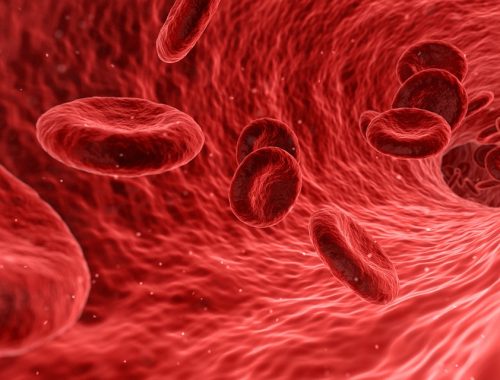What is Physiotherapy?
A physiotherapy is a form of physical therapy. It helps people to overcome the effects of dysfunction. It can also help prevent or lessen the effects of the dysfunction. There are several different types of physiotherapy. Learn about them in this article. You can also find out more about physiotherapists.
Physiotherapy
 Physiotherapy is a profession whereby a physical therapist helps an individual to regain and promote health. Physiotherapists work on a variety of different injuries and physical conditions. They work with a person’s unique physical abilities to help them recover faster. Physiotherapists use therapeutic exercises and other methods to help individuals improve their health and fitness levels.
Physiotherapy is a profession whereby a physical therapist helps an individual to regain and promote health. Physiotherapists work on a variety of different injuries and physical conditions. They work with a person’s unique physical abilities to help them recover faster. Physiotherapists use therapeutic exercises and other methods to help individuals improve their health and fitness levels.
Soft tissue techniques treat muscles and joints by reducing pain and promoting joint function. Some physiotherapists also use manual therapy techniques such as joint mobilisation and manipulation. These techniques are similar to massage but are designed to improve joint function and mobility. Another common manual therapy technique is minimal energy, which uses muscle energy to stretch and lengthen muscles.
Physiotherapists from https://kineticrp.com.au work in hospitals and clinics to address various medical conditions. They are part of a multidisciplinary team that includes physicians, nurses, and therapists. Together, they develop a comprehensive plan of care. The most successful physiotherapy programs involve active communication between the therapist and the patient.
Physiotherapy can help people recover from major medical events and injuries. It can also help patients compensate for losing body parts and improve their quality of life. Physiotherapy can also counteract the effects of aging by enabling patients to remain mobile and flexible even when their body’s function is decreased. Ultimately, physiotherapy can make an individual stronger and more mobile and help them reduce or prevent future injuries.
People suffering from neurological conditions can also benefit from physio Adelaide. It can improve movement patterns, strengthen muscles, and improve balance, and patients recovering from surgery can also benefit from cardiovascular and pulmonary rehabilitation. These techniques help increase lung, heart, and heart function. Physiotherapy can also treat neurological conditions like stroke and Parkinson’s disease.
Types of physiotherapy
Physiotherapy involves the treatment of physical disabilities and improves function and mobility. There are five main types of physiotherapy, including orthopaedics, neurological, geriatric, cardiovascular, and pediatric, and most physiotherapists specialise in one of these areas. For example, orthopedic physiotherapy deals with issues involving muscle and bone structure. Sports medicine-related physiotherapy is also common.
Sports physiotherapy is closely related to MSK physiotherapy and focuses on injuries sustained in sports. For example, sports physiotherapists treat injuries such as hamstring tears or dislocated shoulders. Post-operative physiotherapy, a specialised branch, deals with rehabilitating patients following trauma or elective surgery. This branch of physiotherapy often involves diagnostic tests and unique techniques for reducing pain and swelling.
Neurological physiotherapy addresses problems affecting the nervous system. It aims to repair damaged neural pathways to improve motor control, balance, and coordination. It can also help patients recover from brain surgery. It can also help improve muscle strength. However, it’s important to remember that physiotherapy isn’t just a quick fix for physical problems.
Physiotherapy is available in both public and private settings. Some physiotherapists work for major medical institutes, while others work as independent therapists and consultants. A physiotherapist’s job is to develop techniques to improve mobility and relieve pain. There are many different types of physiotherapy; some specialists can even visit patients in their homes. They are trained to work on the whole body and consider a patient’s overall health and function when making recommendations.
Physiotherapists also specialise in pediatric care. They work with children to improve motor skills and prevent injuries.
Physiotherapists
Physiotherapists face a variety of challenges. One of the biggest is the lack of a consistent professional identity. In addition, physiotherapists disagree about their role in the healthcare continuum, their business model, and how they deliver care. To overcome these challenges, physiotherapists must identify a common calling and work together to reduce internal divisions.
Physiotherapists need to be sensitive to cultural differences. However, the current curriculum fails to include training in cultural competency. Community physiotherapists believe that cultural knowledge is vital to effective treatment. A student focus group interview suggests that lectures about incorporating different races, cultures, and religions into physiotherapy practice would be helpful too.
Physiotherapy is a growing profession in the healthcare field. While many people are referred to physiotherapists by their doctors, more people seek help independently. Recent changes in healthcare systems have made physiotherapists more accessible to individuals. Some countries, such as Canada and Australia, have begun experimenting with putting physiotherapists in the triage system of emergency departments.
Paediatric physiotherapy is a branch of physiotherapy that focuses on the physical needs of children. This practice addresses neuromuscular disorders in children and seeks to alleviate pain, increase motor skills, and improve cognitive processes. Neuromuscular issues strike the nervous system, which controls the body’s functions. These issues typically last a long time and are difficult to overcome.
Physiotherapists have a unique role in treating patients suffering from orthopedic surgery. In addition to providing care to patients, physiotherapists are vital rehabilitation providers.
Switchboard Upgrade
You May Also Like
